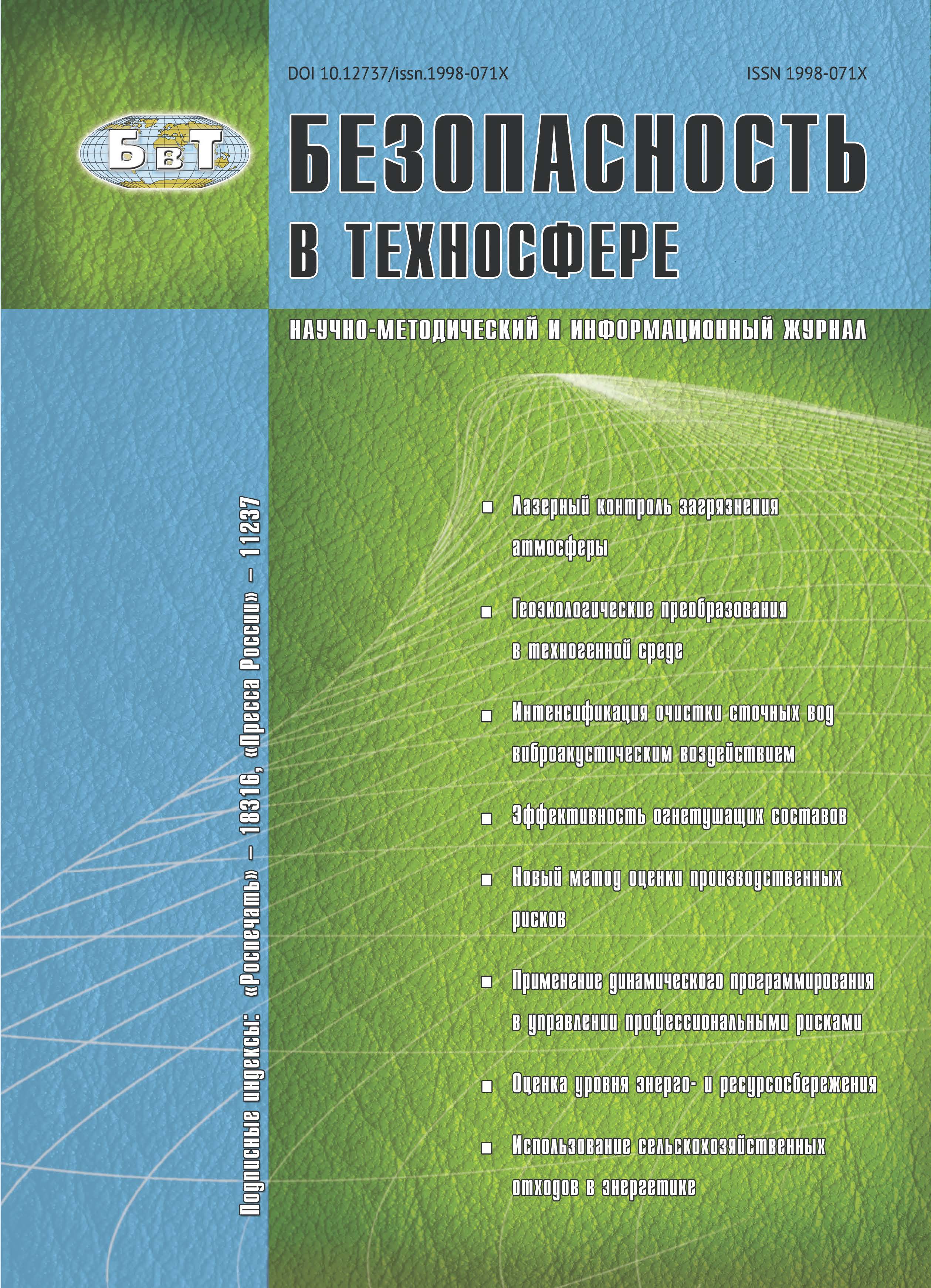The experimental research of questions about the influence of wood species on the duration of combustion of the smalldiameter aspen and pine samples was performed. Its surfaces were pre-treated with an aqueous solution of sodium liquid glass with a concentration of from 0% to 20% with step 1%. It is established that processing of samples shingles from aspen wood increases the duration of their complete combustion of from 89 s to 300 s (3.90 times). The same sample treatment shingles from pine wood increases the duration of their complete combustion of from 180 s to 700 s (3.37 times). For fire protection aqueous solution of sodium liquid glass with a concentration of 14% is more relevant. According to the results of the analysis, and in logical connection with known data from other studies, we found that the speed of combustion of samples of aspen than pine. The duration of the complete combustion of samples tested pine shingles without fire protection is 180 s. But the same in form and dimensions of the samples aspen shingles without fire protection only 89 s, this 180/89=2.02 times less. In addition, we have established that the duration of the complete combustion of samples of pine shingles with fire protection 700 s, and aspen shingles with the same fire protection only 300 s, i.e. in 2.33 times less. For explanation of the differences found formulated the hypothesis: per unit mass, the duration of the stage of pyrolysis, and hence combustion is proportional to the amount of extractable substances contained in the wood. The physical adequacy of the initial hypothesis and the reliability of the numerical results were confirmed by consistency with the measurement of the time complete combustion of aspen and pine specimens with fire protection of the surface.
fire protection of timber, fireproof efficiency, burning rate.
1. Введение
Одно из направлений обеспечения безопасности в техносфере заключается в совершенствовании систем, технологий и способов обеспечения пожарной безопасности, в том числе несущих и ограждающих конструкций зданий [1]. В связи с этим появляется ряд задач, в том числе защита конструкций из древесины от возгорания, которые рассматриваются в данной работе. Прикладные исследования, ориентированные на решение данной задачи, сохраняют свою актуальность на протяжении всей истории применения древесины в качестве строительного материала. К настоящему времени в научной литературе представлен и обобщен большой объем результатов таких исследований [1], анализ и применение которых позволяет обосновывать новые экологически безопасные технические и технологические решения с лучшими технико-экономическими характеристиками. Однако вопросы огнезащиты тонкомерных элементов из древесины требует продолжения исследований.
1. Abrosimov N.V., Ageev A.I., Adushkin V.V., Akimov V.A., Aleshin A.V., Aleshin N.P., Asmolov V.G., Afinogenov D.A., Akhmetkhanov R.S., Balandin D.V., Permyakov V.N., Baranov V.V., Barmin N.V., Baryshov S.N., Belov P.G., Belozerov A.S., Belyaev I.I., Berman A.F., Bolotnik N.N., Bol’shakov A.M. Bezopasnost’ Rossii. Pravovye, sotsial’noekonomicheskie i nauchno-tekhnicheskie aspekty. Nauchnye osnovy tekhnogennoy bezopasnosti [Safety of Russia. Legal, socio-economic and scientific-technical aspects. Scientific basis of technogenic safety]. Moskva, Izdatel’stvo: Mezhdunarodnyy gumanitarnyy obshchestvennyy fond «Znanie» im. akademika K.V. Frolova []. 2015. 936 p. (in Russian)
2. Borisov A.Yu. Drevesina osiny kak material dlya ustroystva krovli [aspen wood as a material for roofing]. Uchenye zapiski Petrozavodskogo gosudarstvennogo universiteta. Seriya: Estestvennye i tekhnicheskie nauki [Scientific notes of Petrozavodsk State University. Series: Natural and Technical Sciences]. 2014, V. 1, I. 8 (145), pp. 87-90. (in Russian)
3. Markov O.B., Kosenkov A.Yu., Borisov A.Yu. Lemekhovye glavki kul’tovykh postroek: voprosy restavratsionnogo i arkhitekturnogo proektirovaniya s ispol’zovaniem SAPR [Ploughshare central administrations of religious buildings: questions of restoration and architectural design using CAD]. CARELICA. 2014, I. 2 (12), pp. 1-8. (in Russian)
4. Borisov A.Yu., Kolesnikov G.N. Pererabotka korotkomerov osiny na dranku v usloviyakh lesopromyshlennogo sklada [Recycling shorts aspen shingles in a timber warehouse]. Resources and Technology [Resources and Technology]. 2014, V. 11, I. 2, pp. 152-161. (in Russian)
5. Chernykh V.V. Istoriya pozharnogo dela Rossii (1800-1990-e gg.) [History of Russian firefighting (1800-1990-ies.)]. Irkutsk, VSI MVD Rossii Publ., 2005. 220 p. (in Russian)
6. Sivenkov A.B. Vliyanie fiziko-khimicheskikh kharakteristik drevesiny na ee pozharnuyu opasnost’ i effektivnost’ ognezashchity. Dokt. Diss. [Influence of physical and chemical characteristics of wood on her fire hazard and effectiveness of fire protection. Doct. Diss.]. Moscow, 2002. 48 p. (in Russian)
7. Hart, J.F., de Araujo, F., Thomas, B.R., & Mansfield, S.D. (2013). Wood quality and growth characterization across intra-and inter-specific hybrid aspen clones. Forests, 4(4), 786-807. doihttps://doi.org/10.3390/f4040786
8. Trushkin D.V., Korol’chenko O.N., Bel’tsova T.G. Goryuchest’ drevesiny, obrabotannoy ognezashchitnymi sostavami [Fire wood treated with flame retardants]. Pozharovzryvobezopasnost’ [Fire and explosion safety]. 2008, V. 17, I. 1, pp. 29-33. (in Russian)
9. Efremov S.V., Tsaplin V.V. Bezopasnost’ v chrezvychaynykh situatsiyakh [Safety in emergencies]. Sankt-Petersburg, Sankt-Peterburgskiy gosudarstvennyy arkhitekturno-stroitel’nyy universitet, EBS ASV Publ., 2011. 296 p. (in Russian)
10. Akinin N.I., Mel’nikov N.O., Maksimenko S.A. O termicheskom razlozhenii zashchishchennoy ot ognya drevesiny [On thermal decomposition protected from fire wood]. Bezopasnost’ v tekhnosfere [Safety in Technosphere]. 2013, V. 2, I. 5 (44), pp. 52-55. (in Russian)
11. Galiakhmetov R.N., Yagafarova G.G., Kuznetsova G.M. Sredstva dlya zashchity drevesiny nizkoy toksichnosti [Wood protection and low toxicity]. Bezopasnost’ v tekhnosfere [Safety in Technosphere]. 2010, I. 3, pp. 32-36. (in Russian)
12. Laranjeira, J.P.D.S., Cruz, H., Pinto, A.P.F., Pina dos Santos, C., & Pereira, J.F. (2015). Reaction to Fire of Existing Timber Elements Protected With Fire Retardant Treatments: Experimental Assessment. International Journal of Architectural Heritage, 9(7), 866-882.
13. Xu, Q., Wang, Y., Chen, L., Gao, R., & Li, X. (2016). Comparative experimental study of fire-resistance ratings of timber assemblies with different fire protection measures. Advances in Structural Engineering, 19(3), 500-512.
14. Gorbett, G.E., Meacham, B.J., Wood, C.B., & Dembsey, N.A. (2015). Use of damage in fire investigation: a review of fire patterns analysis, research and future direction. Fire Science Reviews, 4(1), 1-35.
15. Bakirtzis, D.S., Tsapara, V.C., Kolovos, K.G., & Liodakis, S. E. (2015). Assessment of the impact of fire retardants on the combustion of natural polymers employing DTG and LOI. Fire and Materials, 39(2), 109-118.






